The post A Guide to Jasmine Tea – Types, Production and Benefits first appeared on Blog Royal Tips.
]]>Jasmine flowers, with their pretty white petals and wonderful aroma, are popular throughout the world. Their beautiful appearance and calming fragrance mean that they have come to be associated with love and purity. As such, they are often used in religious ceremonies; to add a touch of elegance to bridal bouquets; and in floral arrangements for Mother’s Day. Jasmine flowers are particularly important in Eastern countries, and are amongst the national flowers of the Philippines, Pakistan, and Indonesia.
It is therefore not surprising that this aromatic plant has many practical applications too: it is grown ornamentally in gardens and homes, used extensively in the cosmetics industry to produce exquisite perfumes and bath oils, employed in herbal medicines and, of course, has long been popular as a light and calming flavouring for tea. In the following post, we look into the history of jasmine teas, from their origins to their production processes and health benefits. Read on to discover all you need to know about this wonderful scented tea and why it’s worth taking the time to relax with a cup of jasmine tea.
History
The jasmine plant, a member of the Oleacae family and native to South Asia, is thought to have been introduced to China around the 2nd century BC. Two jasmine species can be used to produce jasmine tea: Common Jasmine, and Sampaguita. Common jasmine is native to the Middle East, while Sampaguita is native to the eastern Himalayas, though both species now grow in many other countries. Common jasmine is the national flower of Pakistan, and Sampaguita the national flower of the Philippines and amongst the national flowers of Indonesia, where it is a symbol of purity and sacredness.
Jasmine has been used to scent tea since the 5th Century AD, but this process really started to become popular during the Ming Dynasty. In this era, which lasted from 1368-1644, the popularity of floral objects and patterns flourished – relics and art from the time commonly incorporate floral motifs – so, naturally, floral-scented teas also began to be consumed more. Jasmine green tea then became even more widespread in the following Qing Dynasty, when it became popular in western markets and its production and exportation rapidly increased. Nowadays, jasmine tea is traditionally produced in Fujian province in China, amongst the vast fields of jasmine plants grown on the mountain sides, although it is also produced in other provinces such as Hunan, Guangdong and Zhejiang.

Types of Tea used for Scenting
Jasmine tea is produced by scenting dry tea leaves with the intense yet delicate aroma of fresh jasmine blossoms. While lower quality teas are produced using natural or artificial essential oils, the highest quality jasmine teas are made by mixing tea leaves with the jasmine flowers, so that they naturally absorb their rich and pleasant fragrance. Tea scented in this way provides a delicate and refreshing taste, without being overly sweet. Different types of tea can be used in this process, as detailed below.
The most common and popular base is green tea, since it combines perfectly with the jasmine scent to produce a subtly sweet flavour and beautiful fragrance.
To obtain a more complex and distinct floral flavour, Oolong tea can be used, although it is less commonly found in western markets. The oxidation levels of these teas can vary considerably, without reaching the levels of black tea, so this type of tea sits between green and black tea in terms of strength.
For those who prefer a very strong taste, black tea can be used as the base: since it is made by oxidising tea leaves to their maximum, its flavour is far stronger. Enriched with the jasmine aroma, black tea can surprise us with its lightness and lack of astringency.
For those who enjoy teas with more subtle flavours, like white Silver Needle tea, jasmine aromas can be their ideal ally. The delicious and fragrant infusion of high quality, white tea harmonises divinely with the delicate aroma of jasmine flowers, making it into an incredible sensory experience for any tea lover.
Most Popular Jasmine Teas
Jasmine Dragon Perl Tea
Jasmine Dragon Pearls are popular for their freshness and charming appearance. The green tea leaves are meticulously rolled into tight little balls, to give them a beautiful neat appearance. Those with plenty of downy white tips and smaller size are the young tender flushes picked in early spring that represent the highest grade jasmine tea.
The natural jasmine scent, transferred from the jasmine flowers to the tea leaves during the production process, pairs well with the sweet flavour of green tea, adding an incredibly delicate, floral dimension to the liquor. The way the pearls unfurl in the water also produces a spectacular, hypnotic treat for the eyes when it comes to brewing the tea.
Loose Leaf Jasmine Green Tea
Just as with Jasmine Pearls, high quality jasmine loose leaf teas are made from spring-picked tea leaves which are then scented with jasmine flowers in the summer. In this case single leaves are used for scenting instead of leaf shoots.
The young tea leaves are packed with antioxidants, so they provide a lot of advantages for those who wish to benefit from the health properties of green tea, with the pleasant taste of jasmine also being gentle on the stomach.
Jasmine Silver Needles (Moli Bai Hao Yin Zhen)
Jasmine Silver Needles are the most popular scented white tea. This superb, elegant tea is made by scenting the hand-picked Silver Needle tea buds with freshly picked jasmine blossoms. The delightful, subtle fragrance of the finest white tea combines perfectly with the delicate aroma of jasmine blossoms, making it an incredible sensory experience for any tea lover.
However, it shouldn´t be forgotten that white teas can contain high levels of theine. The fresher and younger the buds, the higher the concentration of theine there will be in the dry leaves, with Jasmine Silver Needles having the highest level of all white teas since they are made using only buds from the Camellia sinensis plant.
If you are a fan of jasmine, it’s worth trying different types of jasmine tea to discover which best suits your palate: we are sure you’ll find something you love!
The Production of Jasmine Teas
To begin, tea leaves are picked in spring, when the buds are still small and any open leaves are tiny. Just the new shoots, each comprising a bud and two leaves, are used. These fresh leaves are taken to the factory, where they are toasted in order to prevent oxidation, gently rolled into small pearls, each pearl wrapped in tissue paper to hold the shape, and dried. Although they are now ready to be used as tea, they must be stored for a number of months until the ideal moment for the jasmine to be added. Jasmine flowers are harvested in the summer and so the dried tea is stored in a cool, dry place until this time.
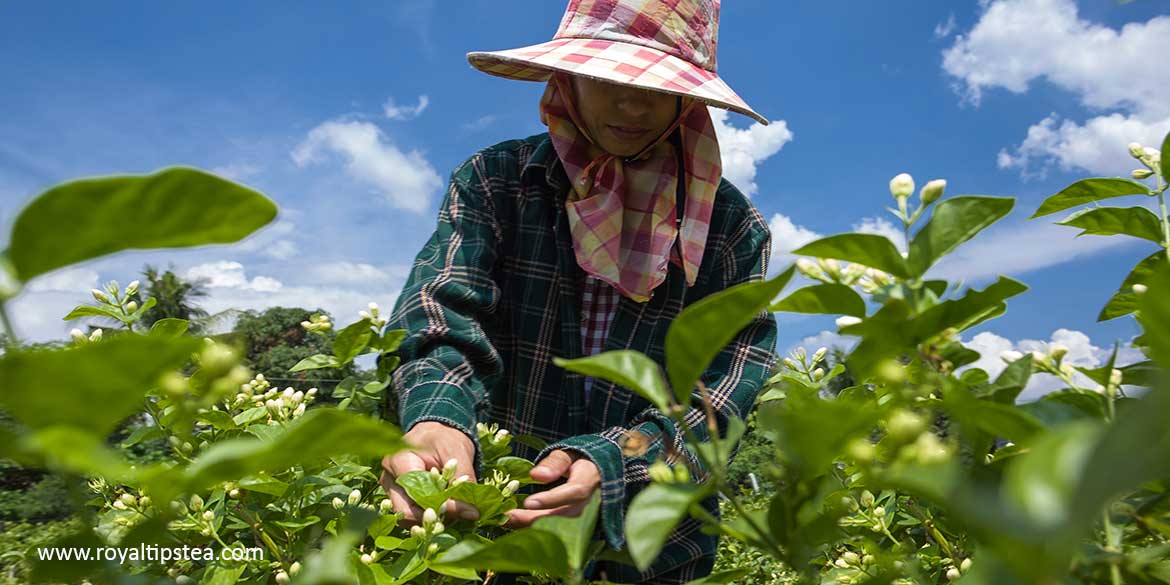
When the jasmine flowers have grown to the ideal point during the summer, they are harvested. They must be picked at the perfect moment: when they are closed during the daytime, and open up at night. If they are picked too early, the buds will not open enough for them to be used to scent the tea. If they are picked too late, when they have already flowered, they will have lost the main aromatic components. When the jasmine plants have reached this opportune stage, they can be used to scent the tea. Branches of jasmine are gathered during the day and brought into the factory and, when they open in the evening, the flowers are removed from the branches.
Then, beginning with a thin layer of jasmine flowers, the jasmine and tea leaves are placed in alternate layers and left to sit for a number of hours while their temperature rises. Once the temperature of these piles has risen to around 45°C, the mixture of tea and flowers is separated into smaller piles in order to allow the tea to cool down. Once they have almost reached room temperature, they are stacked and left again to allow the tea to absorb the fragrance of the blossoms. This process is repeated until the flowers have transferred their beautiful scent to the tea leaves.
Eventually, the blossoms transform into a light yellow colour, indicating they have completely transferred their scent. The mix of tea and flowers are placed into a machine to be sorted, separating the flowers from the tea leaves. The tea leaves are heated at a high temperature, so as to dry them out quickly and to conserve the scent. They are stored until the following night, when the scenting process takes place again with fresh jasmine flowers. This process can be repeated several times until the desired tea quality is reached – for top grade tea, it may even be repeated over eight or nine nights.
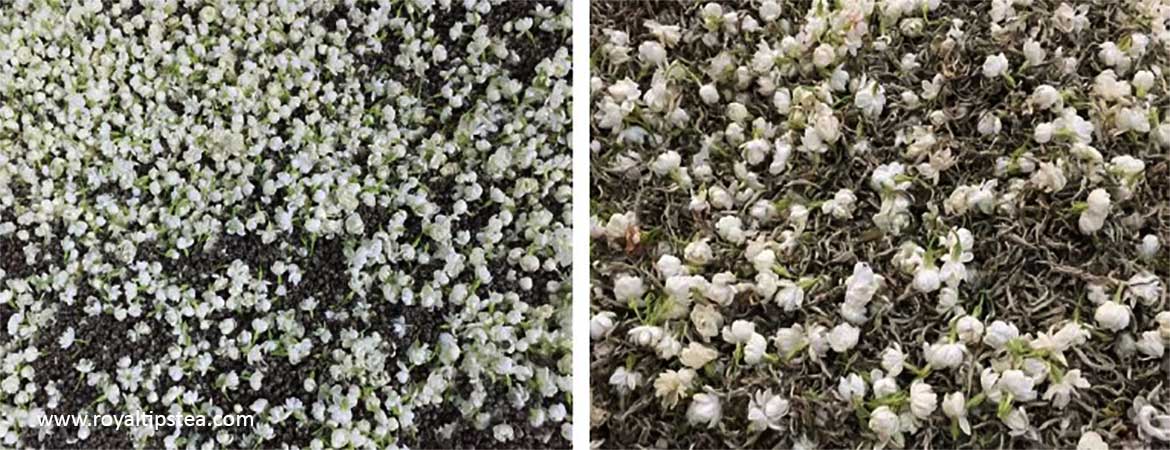
Finally, the tea is dried out again to remove any moisture it has absorbed from the fresh jasmine flowers. Some producers add dried jasmine flowers for a touch of extra decoration before packing the tea for sale.
Health Benefits
Jasmine green tea not only offers a beautiful flavour and scent, but delivers many health benefits too thanks to its high content of antioxidants, including polyphenols and caffeine (theine).
So, how do antioxidants help to maintain our health?
– Firstly, they protect the body from damage from free radicals and environmental toxins, helping to prevent age-related diseases.
– Antioxidants also help to reduce blood pressure and the risk of heart disease, and slow down signs of aging.
– They are naturally anti-inflammatory, which means they’re particularly beneficial for anyone suffering from arthritis: swelling of the joints and arthritic pain may be reduced.
– They boost your metabolism, improving the breakdown of fats. The naturally sweet flavour of jasmine tea also means there is no need to add sugar or sweeteners, further helping you to follow a healthy diet.
– They may also reduce the symptoms of IBD, particularly bloating, since they aid digestion.
– Polyphenols also fight against carcinogens, helping to prevent the development of cancer. They can also prevent the development of, and speed up recovery from, colds and flu, given their antiviral and antibacterial properties.
Finally, studies have shown that jasmine’s beautiful smell in fact acts as a mild sedative, reducing your heart rate. So savouring a cup of jasmine green tea will help you to relax and de-stress, and even help to boost your mood, as well as helping you get to sleep more easily.
The post A Guide to Jasmine Tea – Types, Production and Benefits first appeared on Blog Royal Tips.
]]>The post Tea Ingredients and Why They are Good for your Health first appeared on Blog Royal Tips.
]]>And Lu Yu, the famous Chinese writer who published Cha’ Ching (Classic of Tea) in 780 AD told his readers that tea “tempers the spirits and harmonizes the mind, dispels lassitude and relieves fatigue, awakens thought and prevents drowsiness, lightens and refreshes the body, and clears the perceptive faculties.” So what ingredients are in the tea plant that give it such generous beneficial properties?
Polyphenols, the Natural Ingredients Responsible for Tea´s Flavour
Probably the most important ingredients are what we call polyphenols, natural plant compounds that add flavor and texture to the teas we drink. There are different groups of polyphenols in tea and the largest group are called flavonoids which are formed in sunlight from the amino acids in the leaves.
The most important of these are called catechins which act as antioxidants in the human body and help protect us against age-related diseases such as heart disease, stroke, thrombosis, atherosclerosis, etc.
The most beneficial of the catechins is called epigallocatechin-3-gallate (EGCG), and higher levels of this and other catechins are found in the tender buds and the first one or two leaves on new tea shoots.
Catechins and other polyphenols change during oxidation and so unoxidised teas (green, yellow and ‘silver needle’ white teas) are richer in catechins than oxidized dark oolongs or black teas. The polyphenols in tea account for some of the positive messages about tea’s health properties that have been handed down over the centuries from China.
They certainly help to keep the doctor or apothecary away; and modern research has shown that tea can help protect us not just against problems of our circulation system but also against certain cancers, and against diseases such as Alzheimers since it appears to help protect the brain’s connective tissue.
Tea also contains enzymes, such as polyphenol oxidase (PPO) and peroxidase (POD) that bring about changes in the leaf cells as they break down during manufacture. As the leaves wither and begin to oxidise, the enzymes become involved in changes to the polyphenols, turning the leaves from green to brown and forming theaflavins (responsible for the brightness and quality of the tea’s liquor), and thearubigins (which give tea its rich red color, its depth and its body).
Other flavor and aroma compounds, called volatiles, are also present in the leaves and develop during processing to give the tea its different flavours (grassy, floral, fruity, vegetal, spicy, woody, sweet, etc).
Caffeine and y L-theanine, a combination that improves mood and stimulate mental activity
Traditional wisdom refers again and again to tea’s ability to calm us when we are agitated, wake us up when we are sleepy, help us sleep if we suffer from insomnia, refresh us if we are fatigued.
One poem about tea says the following:
“If you are cold, tea will warm you;
If you are too heated, it will cool you;
If you are depressed, it will cheer you;
If you are excited, it will calm you.”
These somewhat contradictory benefits are the result of caffeine working in harmony with the amino acid L-theanine.
Caffeine is in the tea plant to act as an insecticide and discourage hungry insects from nibbling and damaging the leaves and buds. When we consume drink tea, the caffeine acts as a stimulant to wake us up, increase our stamina, and keep us alert. Too much caffeine absorbed too quickly can make us tremble and feel agitated. But L-theanine in tea slows down the rate at which our bodies absorb the caffeine so that we are less aware of the effects of caffeine and just gradually realise that we feel refreshed, wide awake, and able to concentrate without feeling shaky or anxious.
L-theanine reduces mental and physical stress, reduces blood pressure, and helps us to relax and feel calm. It also has the added benefit of giving tea a wonderful velvety sweetness, and a thick, brothy mouthfeel. When tea grows in sunny conditions, more polyphenols are converted from nitrogen-rich amino acids in the leaf and contribute to the bitterness that we sometimes taste in tea. But if tea is grown under shade or in very misty conditions where the sun barely breaks through the cloud cover, fewer polyphenols form and more amino acids remain in the leaf.
A Source of Vitamins and Minerals
Other beneficial ingredients include fluoride, a natural mineral absorbed from the soil by the plant as it grows and which reduces tooth cavities and decay. Other nutrients include small amounts of manganese, potassium, zinc, beta-carotene, (a precursor of vitamin A, essential for night vision), vitamin B1, B2, B3, B5, B6, B12 (folic acid), Vitamin C and Vitamin E.
The leaves also contain carbohydrates in the form of starches and sugars, saponins (which give tea a bitterness and astringency and have anti-inflammatory and anti-allergy properties), chlorophyll and pigments that determine the colour of the tea. No wonder that the Chinese have a proverb that says: “Better to be deprived of food for three days than tea for one.”
The post Tea Ingredients and Why They are Good for your Health first appeared on Blog Royal Tips.
]]>The post The rose infusion: an elixir of health and well-being first appeared on Blog Royal Tips.
]]>The rose, a flower with a millennial history
The rose belongs to the Rosaceae family and is considered to be one of the oldest species on the planet, with rose fossils dating back more than 35 million years. It is native to Asia and parts of Europe and North America. Due to its attractive appearance and many health benefits, today it is cultivated throughout the world for ornamental, cosmetic, nutritional, and therapeutic purposes.
In the East, they have been preparing this infusion for thousands of years. The dry buds of the Rosa rugosa variety are a natural source of vitamin C, as well as having a purifying, relaxing, and slightly laxative effect.
Within traditional Chinese medicine, this rose variety (known in China as Mei Gui Hua) is considered to be the most powerful of all the aromatic plants due to its immediate but subtle effect. It is grown mainly in the regions of Jiangsu, Sichuan, Shandong, Fujian and Zhejiang.
A rose plant can reach up to 2 metres in height, with its large branches densely covered by leaves, and its flowers growing individually or in small clusters at the end of each branch. Rose petals range in colour from pink and red to yellow and white, and they start to flower between May and June. To guarantee the best properties and perfect conservation, roses are harvested in late spring, just before they bloom. The branches are cut and the buds are then separated and dried at low temperatures, so that all the active ingredients are well preserved.
In addition to a high vitamin C content, the buds of the Rosa rugosa also contain essential oils, fatty acids, tannins and other antioxidants that give it a characteristic aroma and flavour. Precise drying methods must be used in order to preserve these elements.
Rose Infusion as a “Lady’s tea”
As well as being an enduring symbol of love throughout the world, the rose is often associated with women. Its gentle and undisputed elegance, sweet aroma and delicate beauty can fully justify this classical comparison. Nevertheless, a rose is also considered the lady’s flower due to its medicinal properties.
– In ancient times, menstrual pains were treated with rose infusions, since their essential oils relax and soothe cramps
– This flower aids the health and beauty of the skin. Its antioxidants purify the body, help to regulate the imbalances that cause acne, and improve the appearance of the skin in general.
– The diuretic effect of the infusion is favourable in cases of fluid retention, since it facilitates the elimination of excess fluid and reduces the feeling of swelling and bloating that many women suffer, particularly in the summer.
– Due to its low calorie count and purifying action, a rose tea is perfect for those who want to lose weight. In addition, its relaxing effect helps to overcome the feelings of stress and anxiety that often occur when starting a diet.
Although it has been defined as the infusion for women, rose infusions are also suitable for men. Enjoying a drink that is both delicious and rich in healthy properties is always a pleasure for the body and senses, and can improve your general mood in times of heavy stress.
How to prepare a rose infusion
During the summer, the recently harvested and dried rosebuds are the principle ingredient of delicious infusions. This thousand-year-old Eastern tradition isn’t so common in our country, even though the rose’s health and beauty benefits are well-known.
Preparing a rose infusion is easy and it can be consumed cold or hot, depending on your preferences. Use 2-3g of Rosa rugosa buds per cup, and add 200ml of freshly boiled water. Cover and leave the infusion for 5 minutes, before straining it and then savouring the delicious taste. If you prefer, you can sweeten it with honey, though we advise tasting the pure infusion first to enjoy all of its nuances.
The rose infusion is customarily drunk after a meal or at the end of the day. This means that it aids digestion, reinforces the immune system and relaxes the body, all while providing a unique and intense aroma that helps us to enjoy the moment to the fullest.
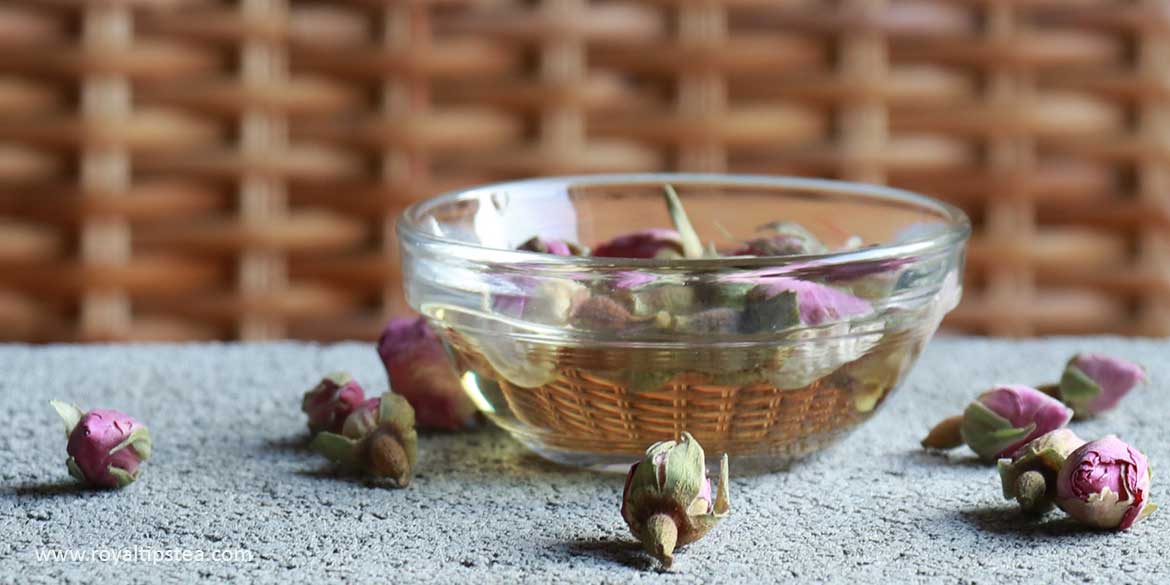
The post The rose infusion: an elixir of health and well-being first appeared on Blog Royal Tips.
]]>The post 10 reasons why green tea is good for you first appeared on Blog Royal Tips.
]]>¿Why is green tea good for?
Whereas the ingredients in the tea leaf change during the manufacture of black and other oxidized teas, green tea undergoes no oxidation and so retains the good things that are beneficial to our health. Here are 10 good reasons to drink more green tea:
1. Caffeine and the amino acid L-theanine work together to improve brain function and stimulates our ability to concentrate and stay focused. Caffeine is thought to improve our mood, reaction time and memory. L-theanine decreases anxiety and stress and keeps us calm.
2. It is thought that drinking plenty of green tea helps to boost our metabolic rate and therefore burn more fat. More trials are needed but research to date does indicate that green tea can help with this but results vary from individual to individual.
3. The increase in metabolic rate and the burning of more fat that result from the consumption of more green tea, is thought to also lead to weight loss if green tea is drunk as part of a controlled diet.
4. The catechins in green tea are thought to protect the neurons in the brain and therefore to protect against neurodegenerative diseases leading to Dementia and Parkinsons. The most powerful catechin is the antioxidant Epigallocatechin Gallate (EGCG).
5. Green tea may also reduce cholesterol and blood pressure and this is thought to help reduce the risk of circulatory problems such as cardiovascular diseases including stroke, thrombosis, atherosclerosis, etc.
6. Green tea has an anti-bacterial effect and is therefore helpful in keeping our mouths, teeth and gums free from bacteria. This helps to reduce cavities and gum disease. It can also help to protect us against infection caused by viruses such as colds and flu.
7. Tea contains small amounts of fluoride which helps to protect the teeth. Fluoride makes teeth more able to resist acid attack from sugars etc in the mouth and, combined with regular brushing, the consumption of plenty of green tea can reduce the number of cavities that form in the teeth.
8. The polyphenols and L-theanine in green tea may help to protect us against some forms of cancer. Research shows that green tea is helpful against breast cancer, prostate cancer, and colorectal cancer. Green tea is usually drink without milk and this is helpful in increasing protection against cancers.
9. Green tea may help reduce blood sugar and therefore decrease the risk of Type 2 Diabetes. A study carried out in Japan found that the members of the group being studies who drank the highest quantity of green tea showed a 42% lower risk of developing Diabetes.
10. As well as helping keep us rehydrated, green tea also contains various nutrients (various vitamins, minerals such as calcium, zinc, potassium, manganese, etc.) and these help contribute to the recommended daily intake of such ingredients in our diet.
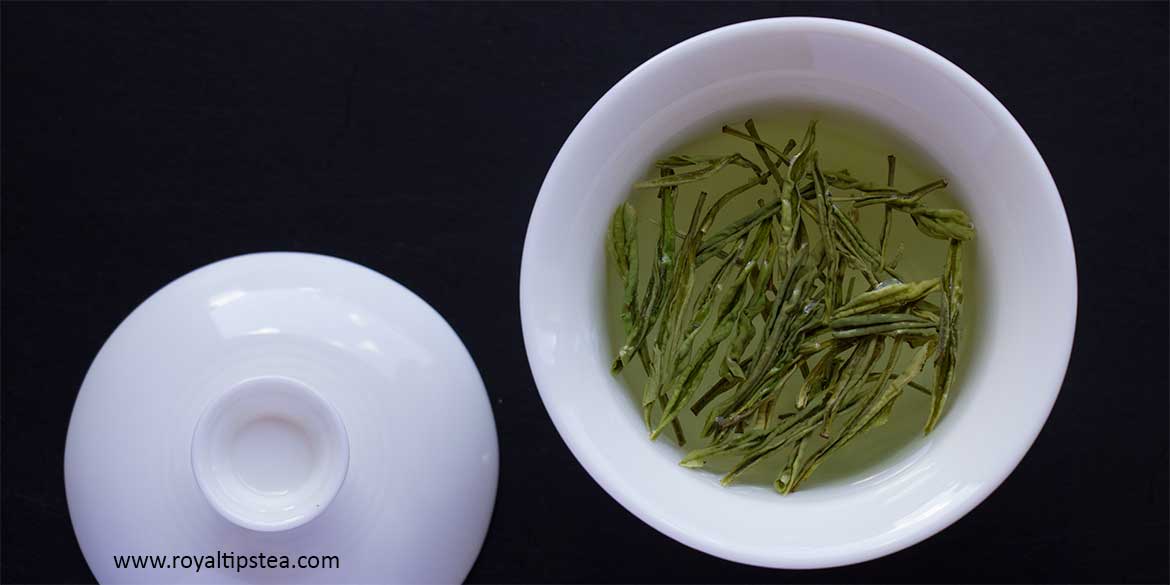
The post 10 reasons why green tea is good for you first appeared on Blog Royal Tips.
]]>The post Tea, buddism and L-teanine first appeared on Blog Royal Tips.
]]>The role of tea in the life of Buddhist Monks
From the moment Buddhism was introduced into China during the Han Dynasty (206 B.C. – 220 A.D.), tea has occupied a very important place in the life of Buddhist monks. Their contribution to promoting and disseminating tea culture has been quite extraordinary. They learnt to cultivate the wild tea plant and to produce different types of tea of unmatched quality. They popularized tea benefits by promoting love and deep respect for nature. They turned the habit of drinking tea into a ceremonial act, steeping every cup they served with the philosophical ideas of Buddhism.
Among all the world’s beverages, why did Buddhist monks choose tea? In the first place, they needed to keep their minds clear and their bodies hydrated during long hours of meditation. Tea´s slightly stimulating effect is due to the presence of caffeine found in the “Camellia sinensis” tea plant. In addition, tea contains a long list of vitamins and minerals that were of great value to the monks, considering the very strict diet that they had to follow in the monasteries.
Still, there was something else in this drink that symbolized the essence of Buddhism, something that the monks were able to recognize intuitively and that now has a scientific explanation.
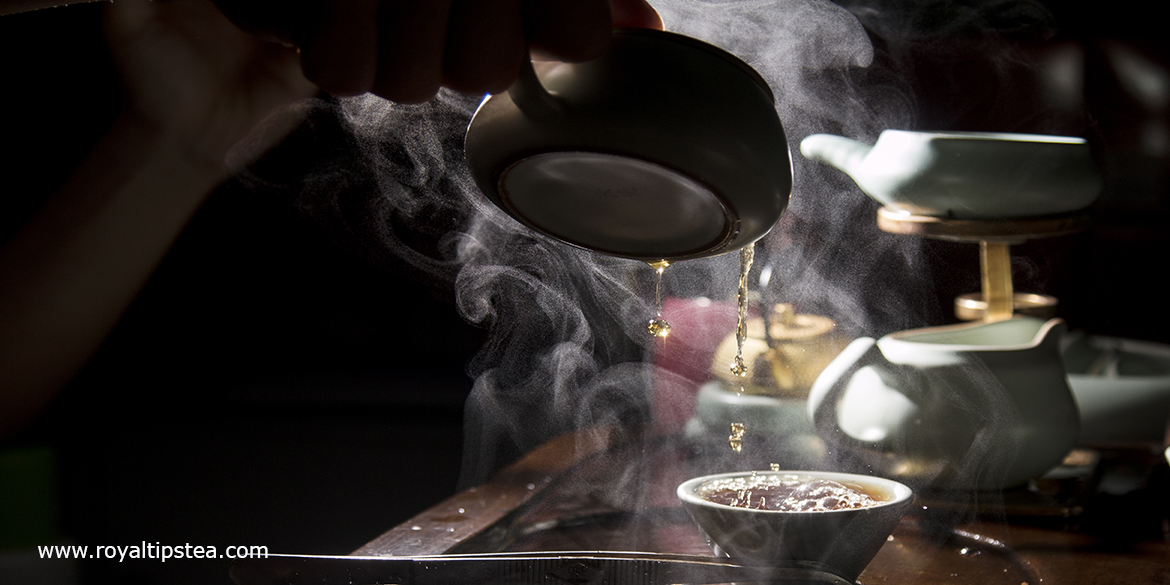
L-theanine, a valuable amino acid in the tea plant
As well as all the beneficial components mentioned above, tea contains an amino acid called L-theanine. Its presence in nature is very scarce, tea being the one of only two beverages that contains it (the other is Gauyusa, an Amazonian tree related to the holly and available now as a herbal infusion). L-theanine is a valuable substance as it stimulates alpha wave activities in our brains.
And when do alpha waves occur? They occur when we are calm and relaxed. They occur as we listen to the sound of the waves on the beach, enjoy beautiful scenery or just close our eyes for an instant. L-theanine helps our body to relax. However, this form of relaxation does not induce sleep, but, with L-theanine working together with caffeine, has quite the opposite effect. It keeps our minds clear, alert and active. It improves concentration. It increases creativity. It helps us think positively and resolve problems more easily. It maintains a healthy balance between body and mind.
Theanine´s use in meditation
If you have ever practised yoga or meditation, you will have experienced the increase of alpha waves. They are perceived through a pleasant state of serenity and deep relaxation. You feel as though you have been transported to another dimension, disconnecting from negative energy and harmonizing the senses. During meditation you develop the intuitive level of consciousness and get to know yourself better.
In this sense the close relationship between tea and Buddhism is more than obvious. Drinking tea made it easier for the monks to meditate. It helped them keep their minds lucid, focused, clear and positive so that they could delve into the inner world without being interrupted by invasive thoughts. According to Chinese philosophy, this state of mind can easily be passed on to other people, which is why one of the central ideas of Buddhism is to maintain a positive state of mind and live in harmony with the environment.
The higher the altitude, the more concentration of theanine in the tea plant
Discovering its innumerable benefits, the monks began to cultivate the tea plant next to temples and monasteries, in the deepest parts of the forests and high mountains. By coincidence, the best teas were the ones that grew on their misty slopes. At high altitude the amount of sunlight is reduced by the dense mist, which also provides moisture and brings about a higher concentration of L-Theanine in the plant. The respect that the monks had for both tea and nature prompted them to improve the quality of production and to find new ways to prepare it. Their efforts soon produced results.
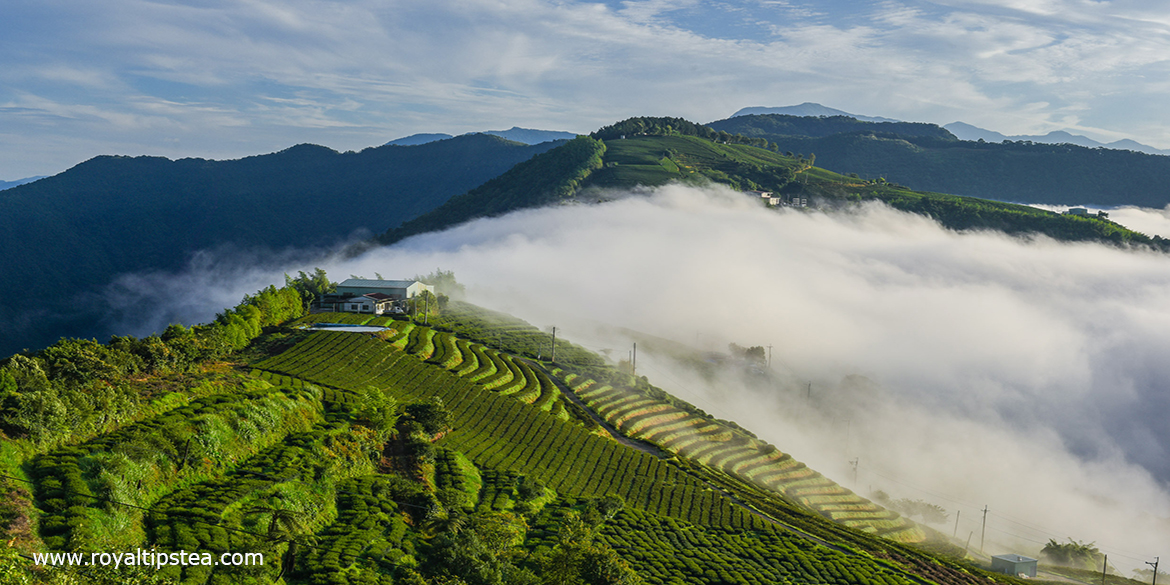
From the poorest to the emperors
As Buddhist monasteries also acted as shelters, libraries and schools, monks soon succeeded in popularizing the practice of tea-drinking among all those who came to visit them. The custom of serving tea during gatherings and ceremonial occasions gave rise to various tea ceremonies, the Gong Fu ceremony being the most famous. This tea ceremony uses specific utensils and high quality, flavourful tea as well as artistic preparation, which requires certain mastery. Oolong and Pu-erh are the teas normally used for the Gong Fu ceremony, never green or white tea.
The excellent quality of the teas produced by the monasteries soon aroused the interest of the imperial court. The best teas were offered as a tribute (known as “Gong Cha”) to Chinese emperors. The court, in turn, provided the necessary funds to enhance the development of new and advanced tea production techniques. Thus, the famous varieties of green tea, white tea, yellow tea and oolong tea gradually appeared. All of them were of spectacular quality and singular flavours.
Some of these teas have not reduced in status for hundreds of years and remain on the top list of the most coveted Chinese teas. Da Hong Pao, one of the best known oolong teas, comes from one of the most spectacular places in China, the Wuyi Mountains, located in Fujian province in the south-eastern part of the country.
The post Tea, buddism and L-teanine first appeared on Blog Royal Tips.
]]>The post Health benefits of tea first appeared on Blog Royal Tips.
]]>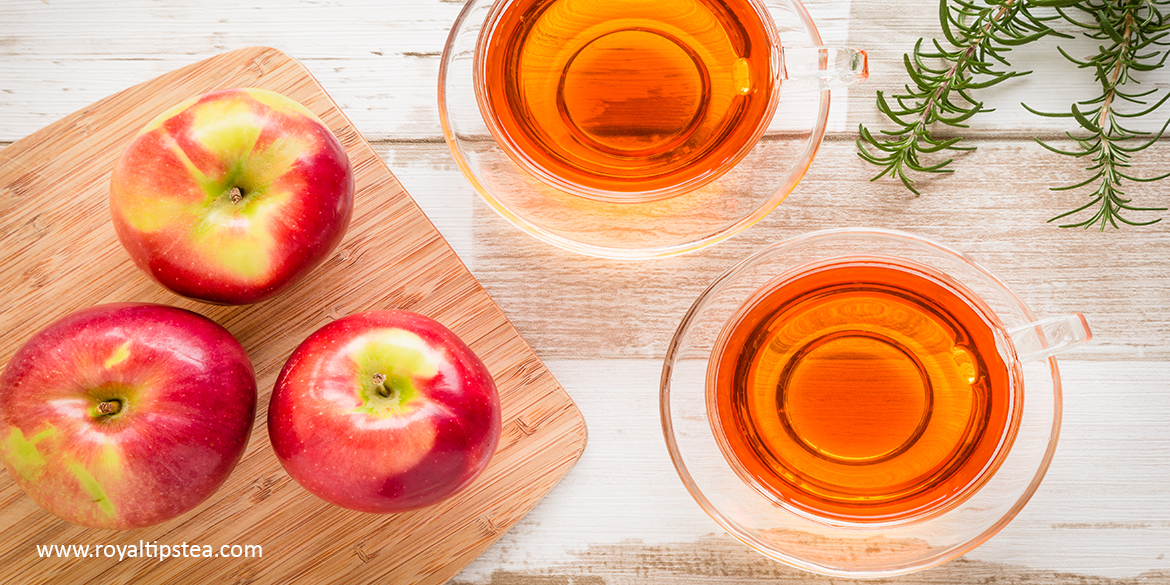
Ever since tea was discovered 5000 years ago, an infusion made from the tea leaves of the plant has been recognized as offering an impressive number of health benefits. Chinese herbalist and ‘Father of Tea’ Shen Nong claimed that tea was beneficial to the bladder and lungs, reduced the desire for sleep, and raised the spirits, and he is said to have encouraged the Chinese to cultivate the tea plant and drink the infusion as their daily beverage. When tea reached Europe it was advertised as possessing all sorts of wonderful medicinal powers and people drank it to cure headaches, skin diseases, stomach disorders, insomnia, sleepiness, fevers, breathing difficulties, heavy dreams, and to strengthen brain power and memory, help the digestion, and protect the kidneys and eyesight.
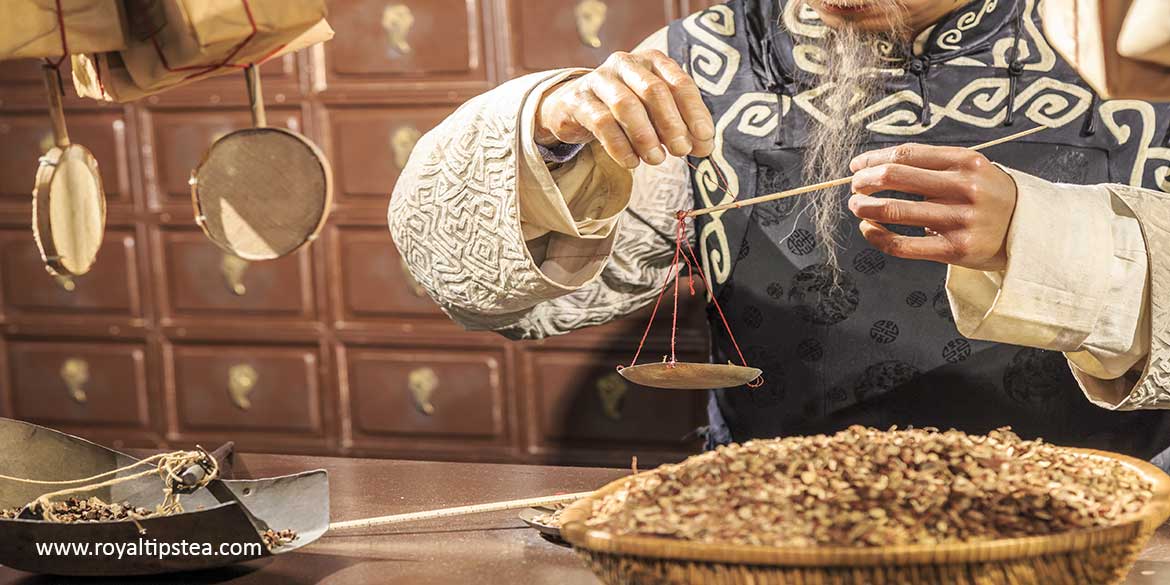
Since those days, scientific research has proved that at least some of what was claimed all those hundreds of years ago is actually true. We now know that tea contains a long list of beneficial ingredients – polyphenols, which act as antioxidants in the body; caffeine; amino acids including L-theanine; fluoride; trace minerals such as potassium (to maintain body fluid levels), calcium (good for bones), zinc (for our immune system and to fight colds), phosphorous (good for teeth and bones), and manganese (for body development and bone growth); and vitamin B2, B12 (folic acid), Vitamin C and vitamin E. All these different components, which vary in quantity according to the different categories of tea, offer a wide variety of health benefits.
Studies have shown that the polyphenols in tea can help protect us against a wide range of age-related health problems, including heart disease, stroke, high cholesterol in the blood, blood pressure, and certain cancers. The caffeine in tea, a helpful stimulant that increases alertness and reduces fatigue, is found in the tea plant as it grows and all teas contain similar levels of the substance. The speed at which the caffeine is absorbed into our bodies is slowed down by the amino acid L-theanine, so the effects are less aggressive then the effects of caffeine absorbed from coffee. L-theanine (tea’s magic ingredient) only exists, as far as we know to date, in three plants in the entire universe – the tea plant, guayusa (an Amazonian tree related to the holly), and the Bay Bolete mushroom. A concentration of L-theanine in tea gives the liquor a brothy, sweet, umami taste. It also increases the activity of alpha waves in our brains, reducing blood pressure and helping us to focus and concentrate in a calm and untroubled way. Fluoride in tea strengthens the enamel on our teeth, increasing resistance to acid in the mouth and so reducing the risk of cavities. The antioxidant polyphenols in tea also help to inhibit the growth of bacteria in our mouths and this reduces the risk of plaque and helps protects our mouths from cancer.
The most important message is that three cups of any type of tea are said to contain more antioxidant power than just one apple, so the more tea we drink (in moderation, of course), and the wider the range of different types we choose, the healthier we will be!
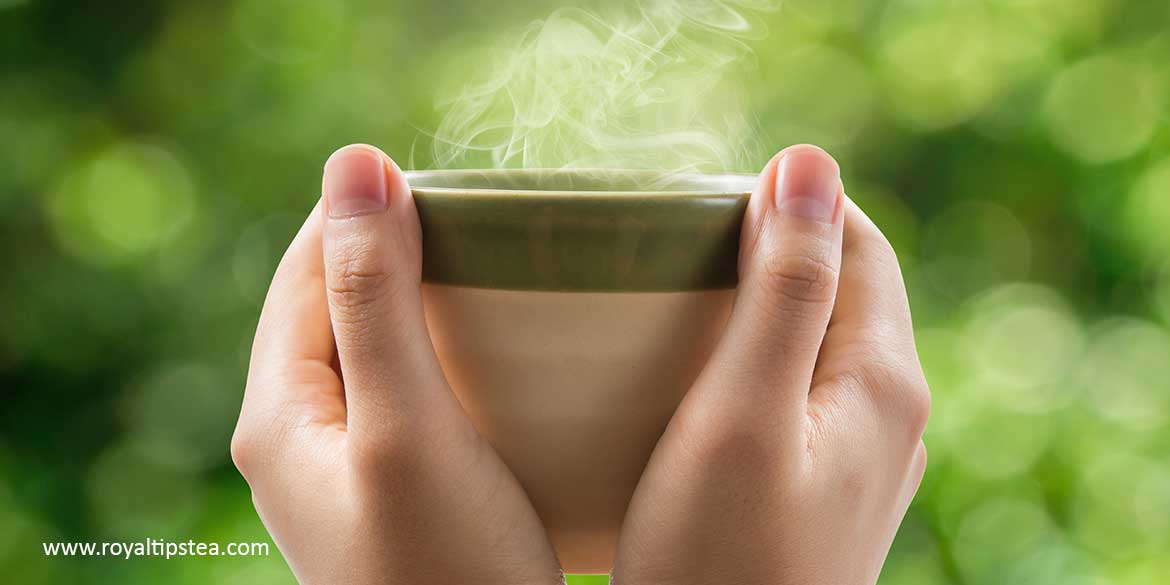
The post Health benefits of tea first appeared on Blog Royal Tips.
]]>